Over the past 2-3 years, hand knitting without knitting needles and hooks has become a trend. For this, special bulky yarn is used, and fingers are used instead of the usual tools. From hand knitting threads, you can make a soft blanket, pillow, pouf, snood, oversized clothing, and home decor items.
What is hand yarn
Hand yarn – the same threads that are used for knitting with tools, only thicker. To knit a product without knitting needles and a hook, use yarn with a thickness of 5 mm. If the diameter of the thread is smaller, you can fold it several times.
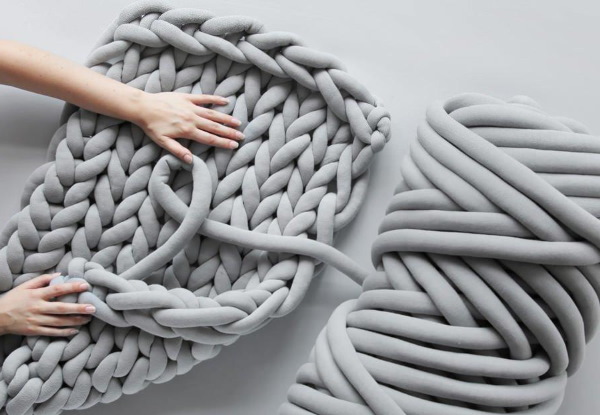
Thin yarn is not used, as when working with it, large gaps form in the knitted fabric. This does not look aesthetically pleasing, especially when the pattern involves tight knitting. Following trends, manufacturers began to produce yarn with a special mark on the skein: "for hand knitting." Often, such threads are dominated by synthetics.
Pros and cons
Yarn for hand knitting without knitting needles and a hook has the following advantages:
- High speed of operation. A large blanket for a double bed can be made in 2-4 hours, depending on your knitting experience. Beginners will spend an extra hour mastering the technique of making loops, after which they will be able to knit at the same speed as experienced craftsmen.
- Simplicity of schemes. Since thick yarn is used for hand knitting, complex or voluminous patterns that would visually weigh down the product are not used. More often, only front and back loops are used in the work.
- Safety. When knitting with tools, you can prick yourself, injure children and animals. Working without tools, you can completely eliminate this possibility.
- Calming effect. The monotonous actions of knitting help to calm down and normalize mental health in case of a tendency to anxiety and aggression. The activity lifts the mood. In some European countries, knitting is often used as part of complex art therapy.
Hand yarn has few disadvantages, all of them are relative. When working with thick thread for a long time, your fingers and hands get tired. Therefore, you need to take breaks in knitting. Yarn with a hard texture can rub your skin, causing calluses.
The high price is another disadvantage of the threads. For large items, such as a blanket, you need from 5 to 15 skeins of yarn, which is already more expensive than usual.
Types of yarn for hand knitting
You can knit by hand even from simple threads of any thickness, folding them into several layers. But this method is only suitable for experienced knitters, since the thread can delaminate and become tangled during the process, which will lead to the need to constantly unravel the fabric and start weaving again.
It is better to knit by hand using yarn that is specially designed for this purpose: it has a uniform structure, is homogeneous, and is pliable for working with the fingers.
Types of suitable threads:
| Alize Puffy | Threads with loops that feel like plush. |
| Thick roving yarn | This is an intermediate version of the thread before it is made into regular twisted yarn. |
| Knitting yarn | The threads are created on special weaving machines and have the appearance of a ribbon. |
| Yarn with pompoms | These are non-uniform threads with the inclusion of the same size pom-poms along the entire length. |
| Plush yarn | These are fluffy threads, soft and uniform along their entire length. |
If special yarn for hand knitting is not suitable, choose material for work from ordinary threads. They differ in composition and properties, so yarn is selected in accordance with the purposes of using the crafts made from it.
Threads with natural wool composition
Wool for yarn is obtained by combing animals. The most common are threads from the undercoat of goats and sheep. The advantages of the material are elasticity, lightness, and thermoregulation. Wool slowly absorbs moisture and does not accumulate static electricity.
Wool yarn has two significant disadvantages: low strength and susceptibility to wear. Over time, the fabric begins to pill. Wool is also unstable when in contact with water: when wet, it stretches, and when washed in warm or hot water, it can shrink significantly.
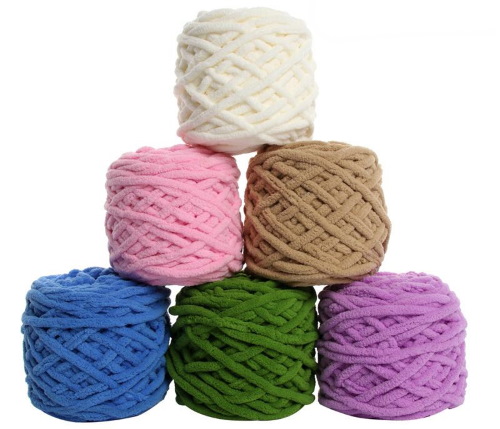
According to composition, wool yarn can be:
- From alpaca (llama). The threads are uniform and do not form pellets over time. They are warmer, lighter than sheep wool yarn, and have high strength. This is an expensive material.
- From angora (angora rabbit). The yarn is lightweight, soft, shiny. It retains heat well. To knit from angora by hand, it is better to choose threads with silk or synthetics, as they are easier to work with when creating large items.
- Made from camel wool. This is the most durable material of all woolen threads. It is suitable for knitting items that will need to be washed often. The threads retain heat well.
- Made from cashmere (mountain goat). When washed in cold water, items made from such yarn will last at least 5 years. Wool is suitable for knitting children's toys, as it is soft and light.
- Made from mohair (angora goat). The threads are strong, light, shiny. Mohair mixed with silk and nylon is used in hand knitting.
- Made from merino (fine-wool sheep). This is a very warm, lightweight and durable yarn. It is suitable for making oversized items with large knit on the fingers.
To compensate for the shortcomings of wool yarn, synthetic fibers are often added to it, which prevent the natural thread from deforming.
Threads with natural plant composition
Threads with plant composition are used in work when creating lightweight items that will be frequently washed, worn, and used. The yarn is suitable for knitting children's toys by hand, home decor items (curtains, napkins, panels, etc.).

Plant threads are made from:
- Cotton. The material is resistant to sunlight and high temperatures, but takes a long time to dry after washing. The products can be washed in a washing machine, but it is better to choose medium temperatures (30-40 °C) so that it does not shrink.
- Flax. This is the strongest thread of all plant species. The material does not deform after washing. Linen yarn is not suitable for creating large crafts, as they turn out heavy.
- Silks. The thread is shiny, strong and elastic. It quickly absorbs moisture. Cotton-silk yarn is used for hand knitting.
Artificial and synthetic threads
Threads of artificial origin include:
- viscose (from trees of the spruce and pine families);

- acetate material (from waste after cotton processing);
- acrylic;
- nylon;
- lavsan;
- lycra;
- nylon;
- spandex;
- polyester;
- polyamide and others.
Yarn for hand knitting without knitting needles and hooks made from these materials is characterized by high strength and wear resistance. The disadvantage of artificial threads is high electrification and yellowing over time.
Texture of threads for hand knitting
In hand knitting, textured threads are often used. Since the products are mainly made using the satin stitch technique without patterns, the texture of the yarn gives the products a "zest".
According to texture, threads are divided into:
- bouclé (a combination of smooth thread and looped yarn);
- tape (wide flat tape);
- cordone (has a uniform texture and uniform thickness);
- mesh;
- tweed (with thickenings of a color different from the main color, along the entire length of the thread);
- flame (a single-color thread with thickenings along its entire length).
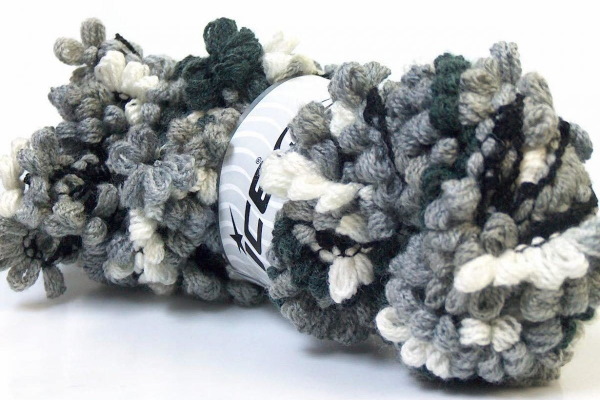

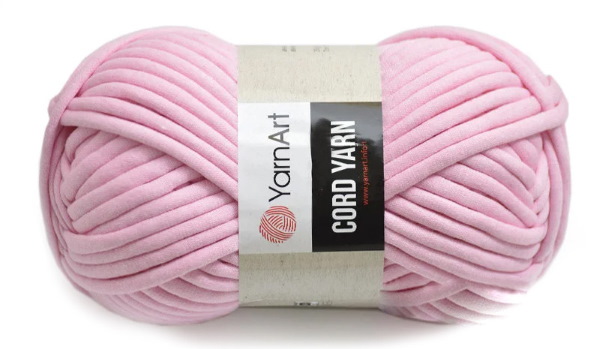
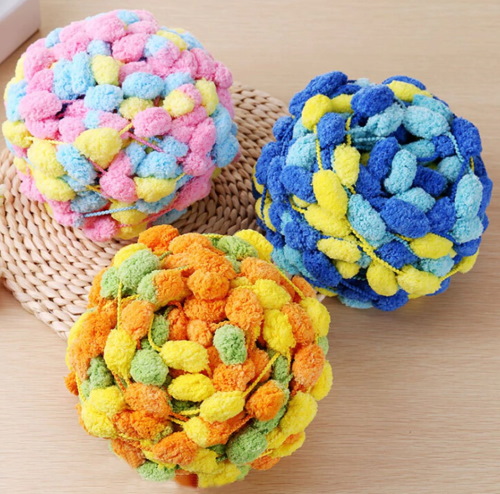
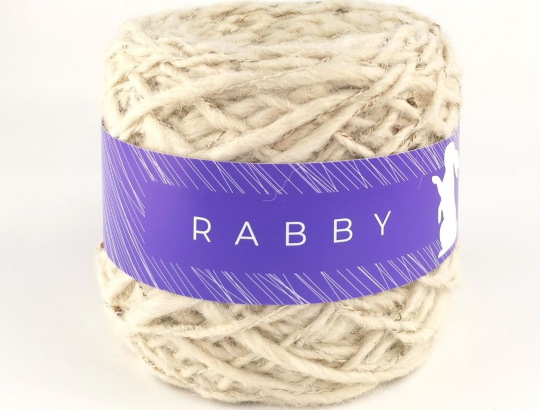
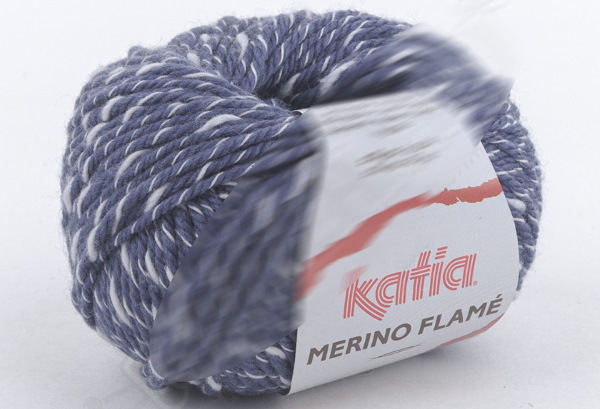
Manufacturers produce composite threads with a silver or gold sheen. They are made from viscose and polyamide (or polyester). An example is lurex - this is a polyester yarn with a metallic coating.
Due to the development of the handicraft industry, threads classified into a separate category - fantasy threads - are increasingly appearing. They are obtained by combining materials of different thickness, color, and texture. The result of production is yarn with loops, pompoms, artificial fur, voluminous pile, etc.
Alize Puffy yarn with loops
The Turkish company Alize specializes in the production of fantasy yarns. For hand knitting, the company produces yarn of the Puffy series, which is distinguished by the presence of loops along the entire length. The principle of working with it is to thread the thread through the loops, which are woven into the thread itself.
Due to the texture, yarn products are voluminous. The threads are soft to the touch and are hypoallergenic. They can be used to make blankets and toys for children. The material is available in a wide range of colors: the range is presented in pastel, bright and colorful shades.

The thread is made of 100% micropolyester. Synthetics do not allow air to pass through well and become electrified from friction at low temperatures.
Yarn for knitting without needles and hooks Alize Puffy is divided into several lines:
- The Puffy series without additional additions is characterized by monochromatic bright colors. The length of the thread in the skein is 9 m with a weight of 100 g.
- Puffy Color is a variegated yarn. Characteristics of the yarn: 9 m per 100 g in a skein.
- Puffy Fine is a thinner yarn. One skein contains 100 g of thread, which is equal to 14 m.
- Puffy Fine Color – gradient style threads.
- Puffy Fine Ombre Batic is produced in 500g skeins, which equals 73m of yarn.
- Puffy Fun is a series in which the plush texture is replaced by a long-haired thread. This creates an imitation of short fur. The line is distinguished by a small assortment of shades, which are presented only in pastel tones.
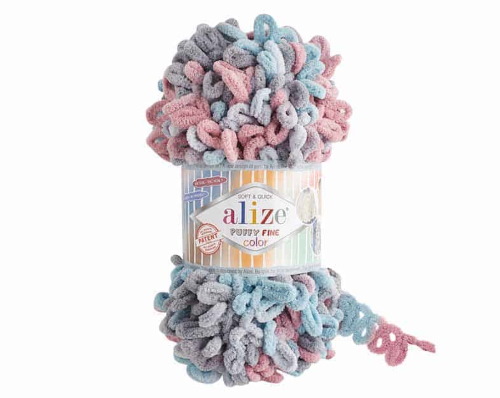
The thread consumption is high. For example, to knit a 1x1 m fabric, you will need 6 skeins of Puffy Fine. The cost of yarn for 100 g is about 150 rubles. For 500 g of thread, you can pay from 850 to 1300 rubles.
Knitting technique
There are more than 30 ways to knit with Alize Puffy yarn. The most common and simple of them is the braid pattern. It is used to decorate blankets, bedspreads, rugs. The fabric is voluminous and light at the same time, it cushions well due to the airiness of the threads.
Algorithm for knitting with a plaited pattern:
- To knit a small blanket measuring 80x80 cm, you need to count 51 loops from the edge of the thread.
- The first loop from the edge needs to be unraveled and a tail left. There will be 50 loops left.
- The last 2 loops are crossed.


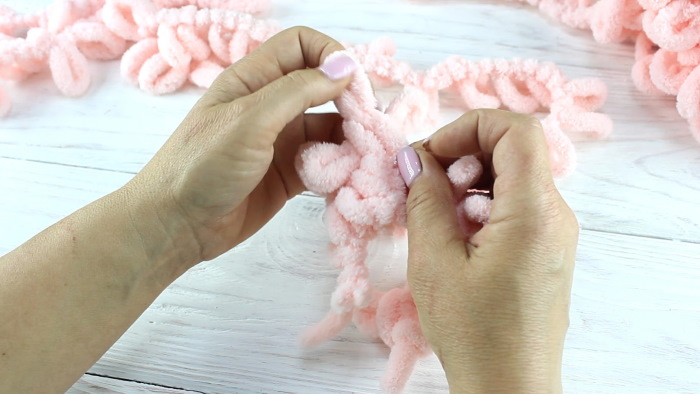
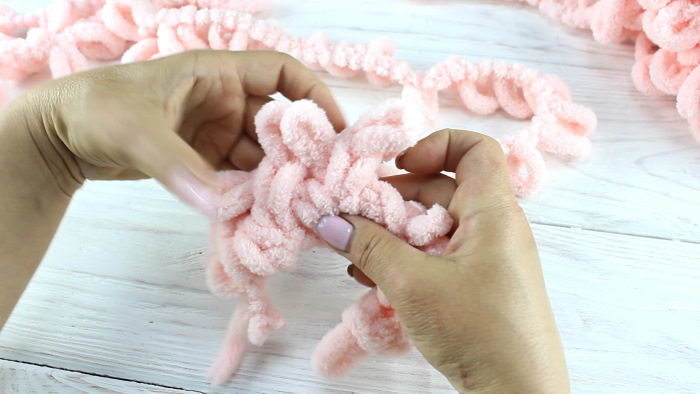
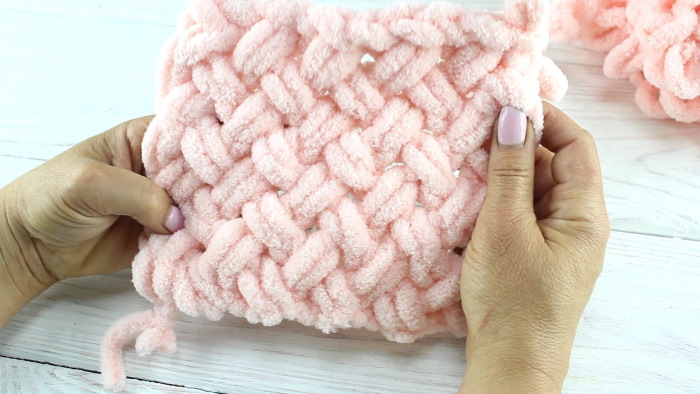


- The first loop from the working thread is passed through the last loop of the row, obtained after crossing the loops.
- The next loop from the working thread is threaded into the second crossed loop.
- Next, separate the next pair of loops, cross them in the same way as the first, and knit with loops from the working thread.
- Knit in such pairs to the end and all subsequent rows. In rows from left to right, the first loop is left unknitted. In rows performed from right to left, the last loop is not knitted.
In addition to a blanket, you can knit children's toys, decorative pillows, snoods, and house slippers from the yarn. It is easier to make items of regular geometric shape from such threads.
Thick roving
This type of yarn is obtained by primary processing of threads. The usual yarn, twisted from several bundles, is made from such material. The prepared and processed fibers are drawn out on carding machines, resulting in a thick, even, but loose thread.
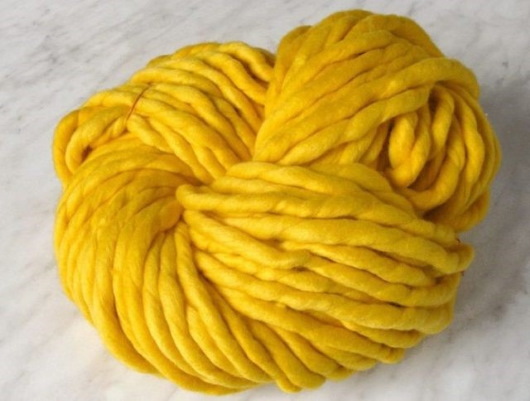
The material contains only wool. No synthetics or plant fibers are added to it. Due to the composition, items made from roving retain heat, do not contain chemical impurities, and are breathable.
One of the disadvantages of yarn is the need for proper care of products made from it. Wool does not tolerate washing at high temperatures. Since the thread is not woven, it is more susceptible to wear and tear and pilling. The heavy weight of the roving can also be considered a disadvantage.
Yarn for hand knitting without knitting needles and a hook must be of uniform texture. Low-quality roving contains inclusions of foreign substances in the composition, may have knots along the length, noticeable breaks in the fibers, different thickness along the length. It is demanding to observe the storage rules.
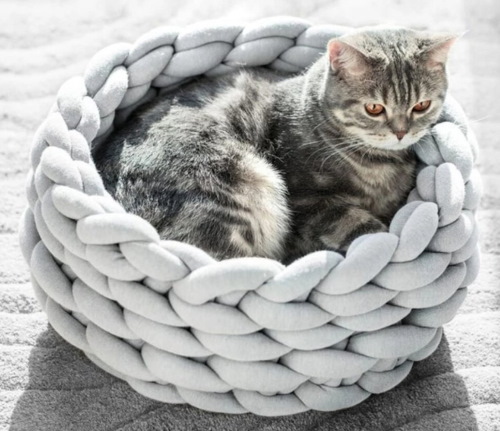
From roving you can knit:
- blankets;
- carpets;
- hats and snoods;
- outerwear;
- baskets;
- animal beds;
- pillows;
- poufs.
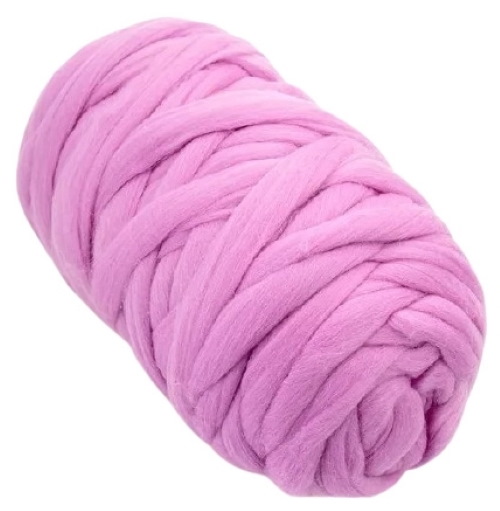
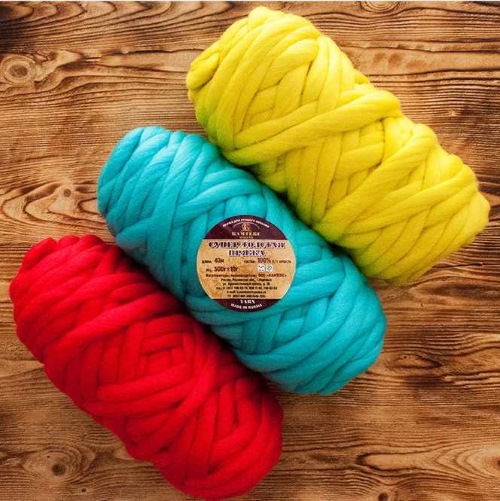
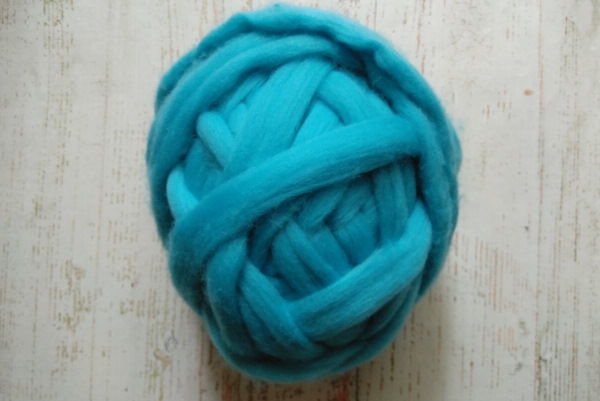

There are 3 large factories in Russia that produce high-quality roving:
- The yarn "Zephyr" from the Troitsky worsted plant is made of merino. The size of the skeins: 500 g per 50 m. Pastel and bright shades of yarn are available for sale. The price of a skein is 1100-1200 rubles.
- The yarn "Super thick" from the Kamtex factory is thicker than the previous one and has a slight twist. It is made from sheep wool. Skein size: 500 g per 40 m. The cost of a skein is 750-900 rubles.
- The super thick yarn "Fittuccini" and the giant "Optimal" from the Cloudly factory are made from merino wool. The price of a skein is 500-700 rubles.
Knit with roving by hand. The larger the size of the loops, the higher the looseness index of the fabric.
How to knit with roving by hand instead of knitting needles
Since the yarn is voluminous, it is almost impossible to make a pattern from it. Even if you knit all the loops of the pattern correctly, it will look awkward on a large canvas. Therefore, when working with roving, loops are made using the front surface technique.
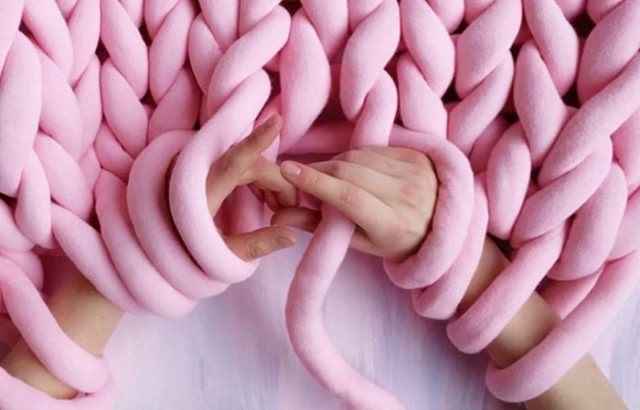
The principle of knitting is the same as when working with knitting needles, only the tools replace the hands:
- The set of loops is performed on the hands. The working distance is from the wrist to the elbow. If you set more loops, then the movement of the hands will be limited, they will quickly get tired and it will be impossible to continue working.
- The finished loops are removed from the hand and placed on a flat surface so that the knitting does not get tangled.
- The working thread is pulled through the removed loops, as in regular knitting.
The fabric is knitted to the required size, the loops are closed, and the remaining end of the yarn is sewn on, since it will be difficult to tuck it inside the fabric, and the hidden end will be conspicuous and spoil the appearance of the product.
Knitting yarn
Knitted threads are made on weaving machines. Visually, the yarn resembles an elastic band. It consists of natural cotton fibers. Knitted material is the most convenient for hand knitting: it has an optimal thickness, simple texture and high pliability.
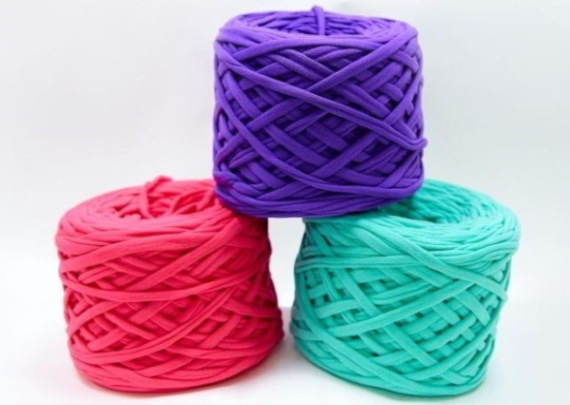
There are 2 types of tape:
- Primary. It is created specifically for handicrafts, continuous along the entire length, monochromatic and of the same texture. A skein weighing 100 g costs about 150 rubles. The average thickness of the tape is 7-8 mm.
- Secondary. This is a recycled material produced from the remains of weaving production. Such tapes have defects: breaks, knots, non-uniform color. Such yarn is cheaper - about 80-90 rubles per 100 g.
Recycled yarn can be made independently from old knitted clothes. It is cut into strips of equal thickness, and the pieces are sewn together to form a long thread. The disadvantage of knitwear is its slight shrinkage after washing. This property of the material must be taken into account when knitting, loosening the tension of the thread as you work.
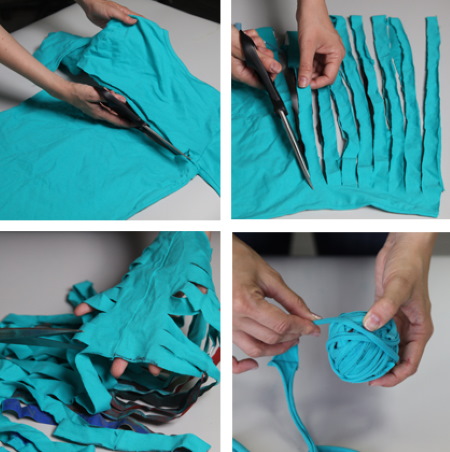
The following Russian factories produce knitted tapes:
- "Ribbon". A skein weighing 380 g, containing 100 m of 8 mm thick thread, costs about 400 rubles.
- "Troitskaya Worsted Factory". The price of a skein, weighing 200 g and thread length 165 m, is 250-300 rubles.
- "House of Yarn". For a skein weighing 330 g, the length of the thread in which is 100-110 m, you need to pay 370-400 rubles.
Techniques for working with knitted tape
Finger Knitting is a technique used with knitwear, which literally translates as "finger knitting". The essence of the method is to cast on loops on the fingers instead of knitting needles. Then the working thread is threaded through the formed loops, thus weaving a long ribbon.
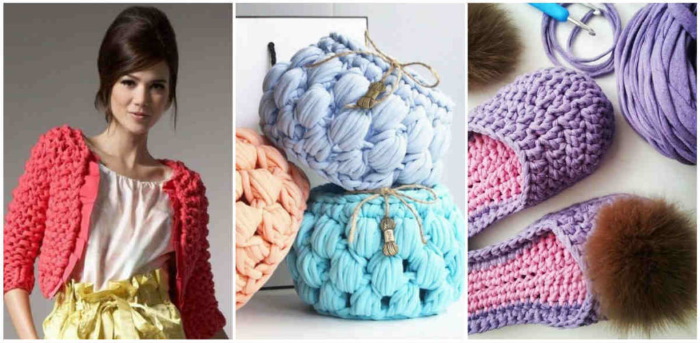
Using this technique you can knit:
- bags and backpacks;
- accessories: scarves, snoods, hats;
- baskets and boxes;
- table napkins and potholders;
- children's toys;
- poufs;
- pillows;
- house shoes.
Also, knitted yarn is used in a street weaving technique called yarn bombing. The essence of the method is to weave garden furniture (chairs, armchairs, benches), making them soft and bright. Knitted yarn has a distinct disadvantage - low resistance to ultraviolet radiation and moisture. Over time, the fabric fades under the sun's rays, and when wet, it can rot.
When choosing yarn for hand knitting, you need to focus on the composition and properties of the threads. Since you will be working without knitting needles and a hook, this means that the material will be in constant contact with the skin.
If the yarn is too thick and stiff, it can cause blisters. Low-quality yarns are dyed with low-grade dyes, which can lead to skin staining and, in severe cases, allergies.
Video about yarn
Yarn for knitting by hand without knitting needles:
